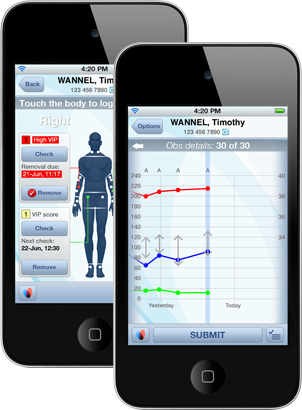Respiratory rate needs to be measured over one minute?
A fundamental part of medical practice is the measurement of primary physiology. For centuries heart and respiratory rates have been calculated to help identify disease and demonstrate response to treatment. However confidential enquiries, internal reviews and other studies frequently show that observations are poorly taken. This in part has lead to an inexorable rise in early warning scores and system to identify acute illness. A potential barrier to the recording of observations, whether by doctor, nurse or other health professional is the time taken to measure them. Traditionally a minute has been the gold standard in order to ensure reliability. Studies have supported the 60s approach (Simoes 1999) but with increasing pressures on health services and rapid advances in easy to access technologies the time has come for a review. Can you help?
Take part in a large scale observational trial using your smartphone
This idea was first in my previous post here, tweeted and published on the NHS Hackday googlegroup . This idea was quickly picked up by Neville Dastur, a Consultant Vascular Surgeon, software developer and owner of Clinical Software Solutions Ltd and 7breaths was born.
What are we going to do with the data?
The data will be openly available to data analysts and mathematicians to attempt to generate an algorithm that can be used in future version of 7breaths that will automatically report the respiratory rate once the software is ‘confident’ that it is able to predict within set level of confidence what the respiratory would be at 1 min.
We envision that this will take into consideration
- Inter-breath duration
- Variability and pattern of the Inter-breath duration
Why bother with this?
Ultimately this is a demonstration of the power of open source, collaborative healthcare innovation. While it is a bit of fun there is a real possibility that new methods to improve the accuracy of RR measurement and that can also save time could transpire. It’s also a demonstration that a simple piece of software may enable an economical way of gathering data at the point of care that does not require any form of duplication of efforts.
Want to take part?
Download the App
Register
When you first download the app, you have the option of registering the software. We would encourage this as it would allow us to acknowledge your contribution and also provides a degree of provenance for the data collected.
Start collecting data
When you are next counting a patient’s respiratory rate, use 7breaths instead. At the end of one minute it will report the respiratory rate and it will give you an option of sending the data to us. That’s it!
Who’s behind 7 breaths?
Damian Roland – Paediatrican (@damian_roland)
Wai Keong Keong – Haematology Registrar (@wai2k) <- ME
Neville Dastur – Vascular Surgeon (Clinical Software Solutions) <- He built the app! (Sourcecode on GitHub)





